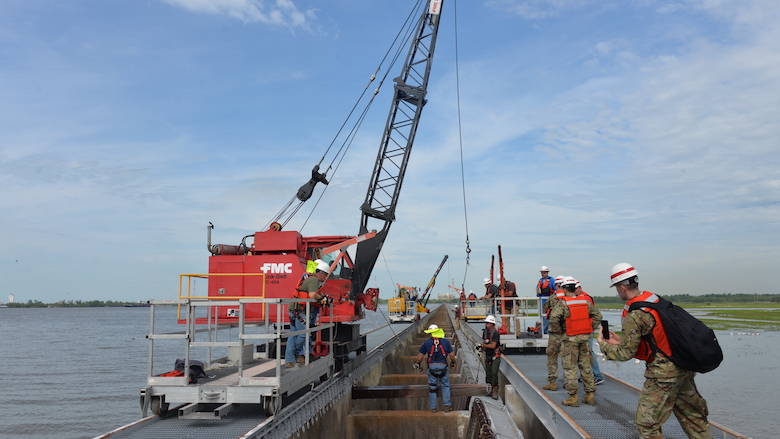A lawsuit against the U.S. Army Corps of Engineers over the opening of the Bonnet Carre Spillway was dismissed by a federal court March 27 after finding it lacked authority to instruct the Corps to conduct a new, extensive environmental impact study.
The decision could end a four-year-old lawsuit that was filed by coastal Mississippi communities, fishers and recreational businesses contending the Corps violated the National Environmental Policy Act (NEPA) and failed to consider the potential damage to the fishing and tourism industries when repeatedly opening the spillway in the last decade. The plaintiffs requested the Corps produce a supplement environmental report examining the impact of opening the spillway.
To protect New Orleans and southern Louisiana from flooding, the 1.5-mile-long structure was completed in 1931 to divert water from the Mississippi River into nearby Lake Pontchartrain. Only in recent years has the Corps been regularly using the spillway.
In Monday’s ruling, the U.S. 5th Circuit Court of Appeals found it had no legal jurisdiction to make a ruling, citing the Corps did not waive sovereign immunity granted in the 1928 Flood Control Act, known as the Mississippi River and Tributaries Project, which granted the construction of the spillway.
Specifically, the Court wrote since there was no physical change in the spillway structure, NEPA doesn’t require a supplemental environmental report.
“For better or worse, Congress and the Corps have the authority to act on the plaintiff’s dire environmental concerns. The federal courts do not,” the ruling reads.
The ruling details how the spillway has helped New Orleans to avoid flooding and saving the city “the trouble and expense of heightening its levees to manage such flow on its own.”
The three-panel judges sympathized with the plaintiffs, writing that the structure “takes a toll on a host of environmental and economic interests, causing everything from disruption to oysters, sea turtles, and shrimp, to toxic algae, blooms, seafood warnings and beach closures.”
The ruling also drew attention to the frequency with which the spillway is now used, versus its original purpose of being used infrequently and briefly. Since construction, the spillway was opened 15 times, but in the last ten years, the spillway was opened four, twice between 2018 and 2020.
In 2019, the spillway was opened twice for a total of 123 days. By opening the spillway for weeks at a time coupled with other flooding issues, a federal fisheries disaster was declared, resulting in $88 million in federal relief.
The ruling states, regardless of the cause, “the increased operation of the spillway that aggrieves the plaintiffs and harms the Mississippi Sound is traceable to the fact that the spillway must now be used more often, not that it must now be used in defiance of its original operation plan.”
The Corps referred questions to the U.S. Dept. of Justice, which did not respond to ENR's requests for comment.
Robert Wiygul, the plaintiffs’ attorney, said the communities that sued support the Corps and its mission to protect lives, commerce and the environment.
“All we ask of them in return is to help us in protecting our lives, business and environment,” Wiygul said. Plaintiffs are considering their legal options, he added.
One sentence of the 14-page ruling could rise the plaintiffs' hope for future rulings: consideration of their concerns “may well require the Corps to consider alternatives that would lessen environmental harm to the Mississippi plaintiffs.”





